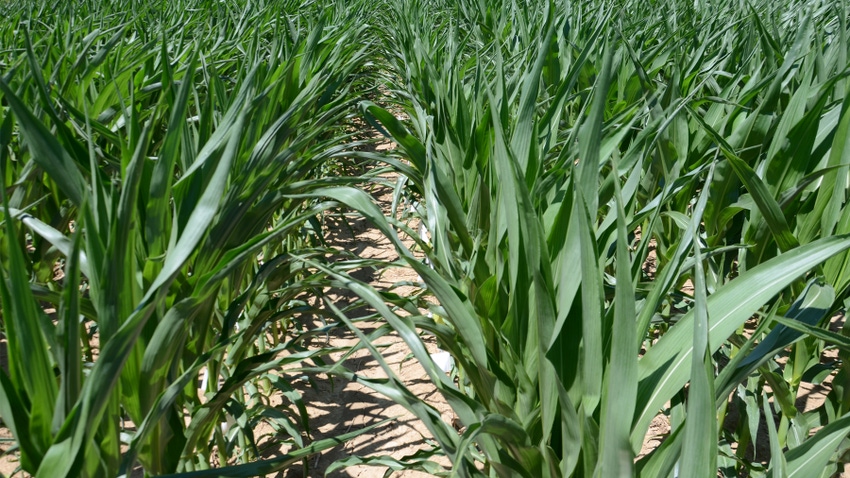July 11, 2023

by Dan Quinn
One of the most noticeable symptoms of drought stress is leaf rolling, which is due to plants closing leaf stomates to limit transpiration of moisture through plants. Although the attempt to limit transpiration of moisture can help a stressed corn plant, stomates closed for a prolonged period can reduce plant photosynthesis due to reduced carbon dioxide accumulation.
Severely drought-stressed plants start turning gray, which indicates death of chlorophyll and a severe reduction in photosynthesis. The earlier in the day leaf rolling occurs and the longer the duration, the more stress the plant is under. Therefore, the more potential yield loss can occur.
Previous research reveals how much yield loss you may expect when drought stress and leaf rolling occur for four consecutive days or more. If it’s earlier in the season and corn is in V3 to V12 vegetative stages, four days of leaf rolling can lop off 1% to 3% of yield potential per day. For V12 to tasseling corn, it’s 2% to 5% per day. Once corn is pollinating all the way to the blister stage, you could lose 3% to 9% per day.
Drought stress during vegetative growth stages can reduce overall plant and leaf size. For example, previous research has observed upward of 28% to 32% reductions in final plant dry matter weight with persistent drought conditions during the rapid vegetative growth period. Plants may be shorter. Reductions in plant and leaf size can reduce the overall photosynthetic “factory” of the plant. This means photosynthate production for kernel formation and grain weight also may be limited.
Significant drought stress during vegetative growth can also reduce yield due to kernel number reductions caused by restricted ovule formation during the rapid growth period. Potential kernel number per row is more sensitive to environmental stress than kernel row number per ear.
Nutrient uptake can also be limited when it’s dry early. That’s why potassium deficiency is often observed under drought stress conditions. Unfortunately, applying more potassium fertilizer will not alleviate this issue.
Planting date and drought
One of the biggest observed crop establishment and crop condition differences observed in 2023 was a function of planting date. Drought conditions did not begin to appear in Indiana until the last week of May and persisted throughout June. Therefore, much of the corn planted at the beginning of May was well established and had good rooting depth by the time drought conditions began, which provided some drought tolerance. Corn planted during the last half of May became more susceptible to germination and establishment issues caused by drought.
Not all effects of an early drought are negative. Dry conditions can encourage deeper rooting, which will likely assist corn plants with moisture access later in the season. However, yield loss can still occur.
Common issues observed in young plants experiencing drought stress include desiccation and death of nodal root development, causing “rootless” or “floppy” corn syndrome. In severe cases, outright death of young plants results in plant population losses.
Quinn is the Purdue Extension corn specialist. Contact him at [email protected].
Read more about:
DroughtYou May Also Like




